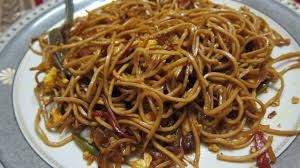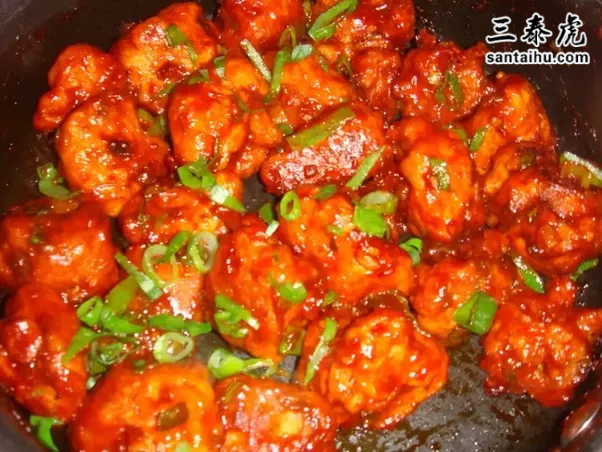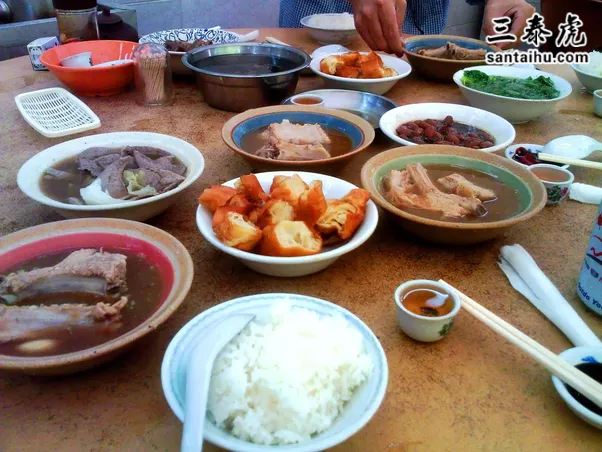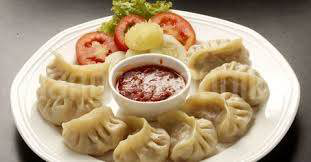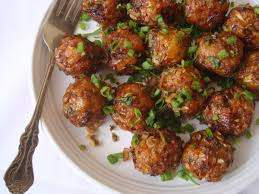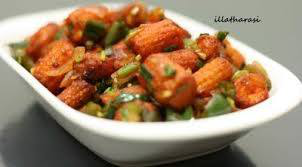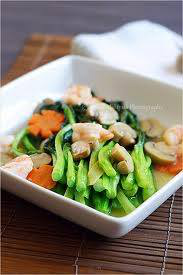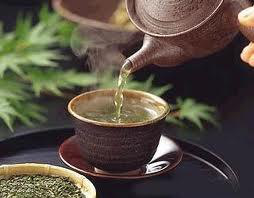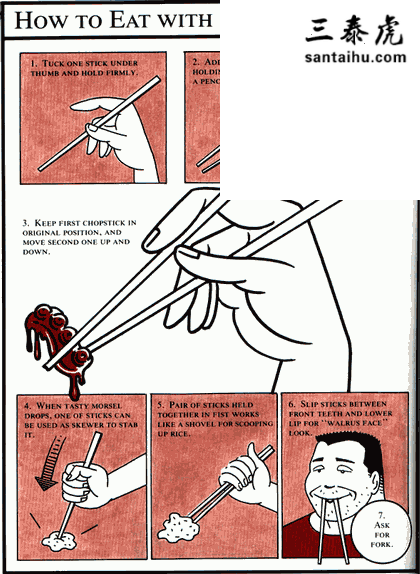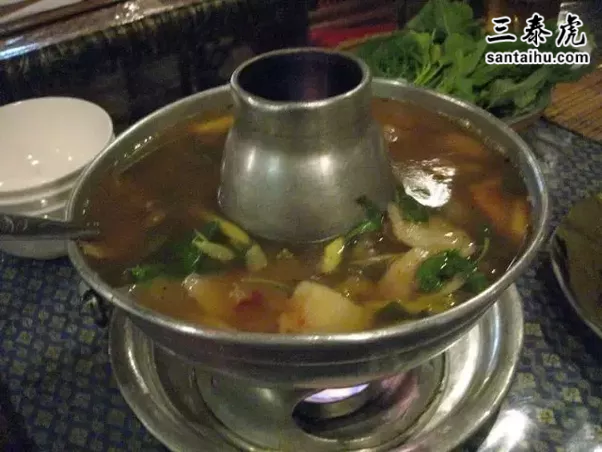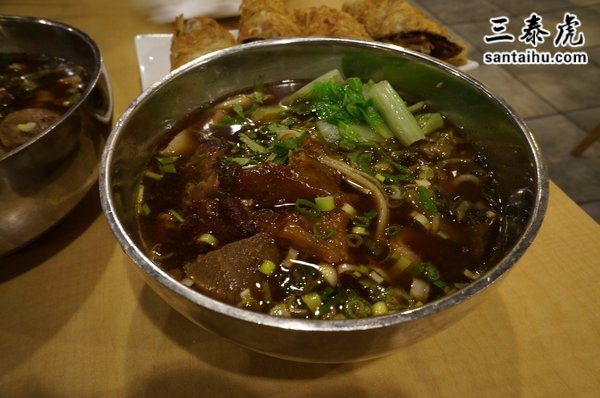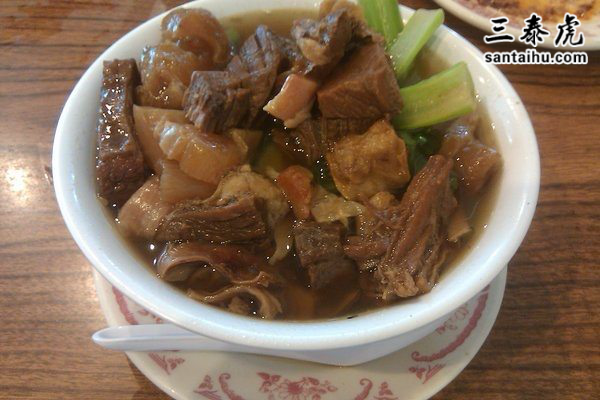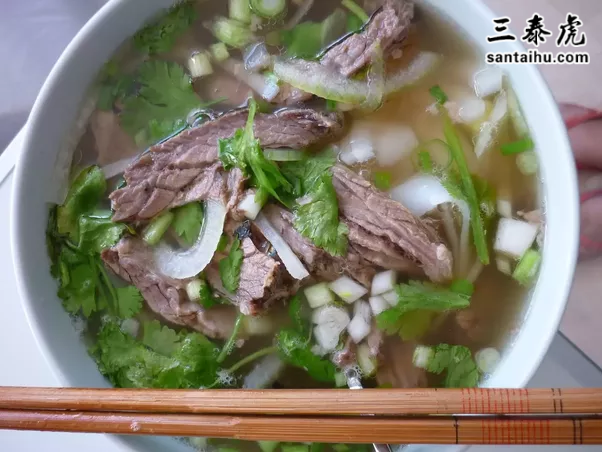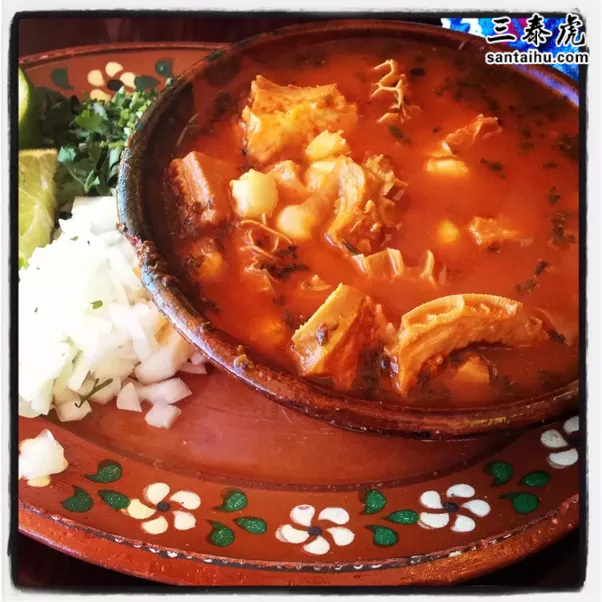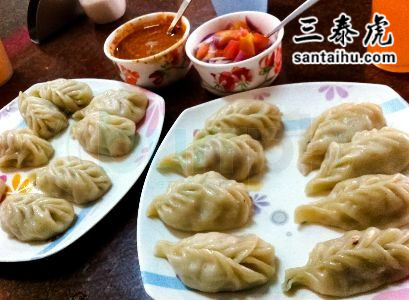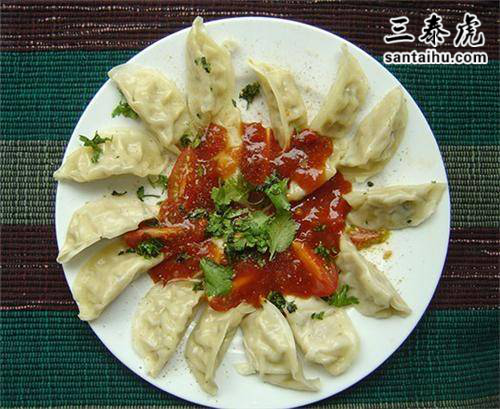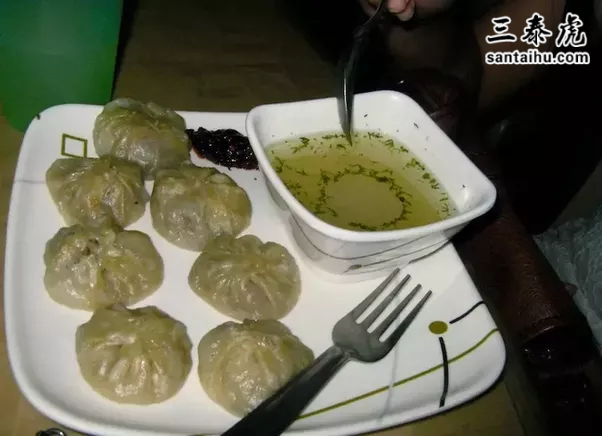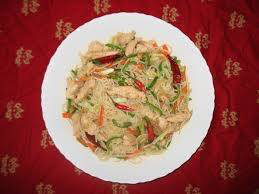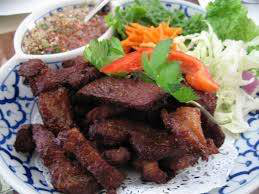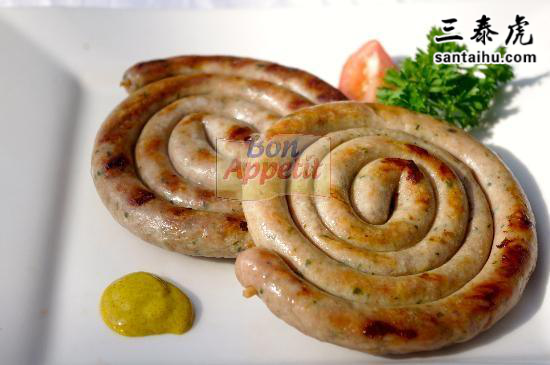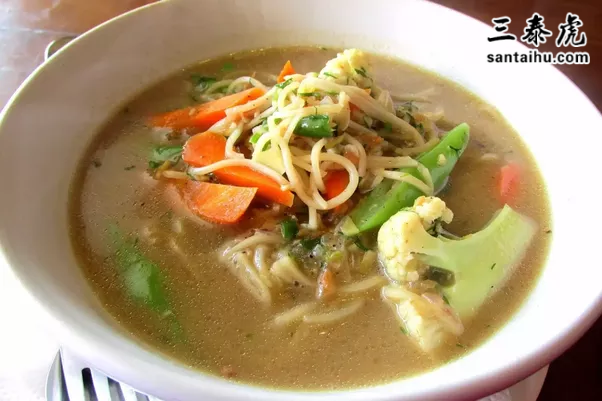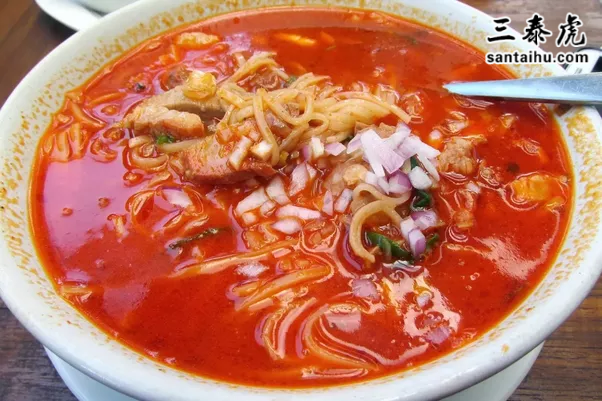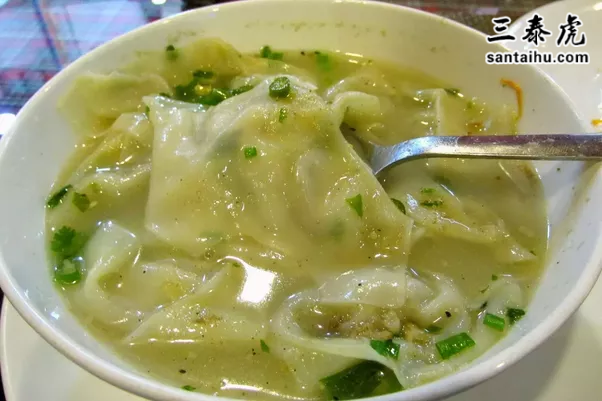美版知乎: 印度的中国菜和正宗中国菜有什么不同
What is the difference between Chinese food available in India and authentic Chinese food?印度的中国菜和正宗的
What is the difference between Chinese food available in India and authentic Chinese food?
印度的中国菜和正宗的中国菜有什么不同?
Quora评论翻译:
来源:三泰虎 http://www.santaihu.com/46195.html 译者:Jessica.Wu
Priyanka Chatterjee, Eat what grows on plants and not what is manufactured in plants
I am a vegetarian.
Being a hardcore fan of Chinese food whether Manchurian or chow-mein, I was very thrilled when I had an opportunity to visit the mainland.
But this excitement didn't last too long as I had a very hard time finding something that is vegetarian as well as spicy.
Chinese food is bland to the Indian tongue.
Indian Chinese food is hot, spicy and saucy.
Chinese food of China is less spicy, less oily. Their main taste ingredient is meat. Vegetarians have very few choice.
Some food items that tastes almost similar are the fried rice and momos/dumplings .
*Egg is considered vegetarian.
*Even rice is eaten with chopsticks. Its not easy but eventually you get a hang of it.
* Most of the food items I ate was boiled with salt and butter and different sauce was given separately to be added on top of it.
我是素食主义者。
作为中国美食的铁杆粉丝,非常喜欢什蔬菜丸和炒面。每当有机会去中国时,我都非常激动。
但这种兴奋并没有持续太久,因为在那很难找到一种既是素食又辛辣的食物。
中国菜对印度人来说淡而无味。
印度的中国菜又辛又辣。
正宗的中国菜却既不辣也不油。他们爱吃肉,素食者的选择很少。
有些食物尝起来差不多,比如炒饭和饺子。
在中国,鸡蛋算素食。吃米饭也用筷子。这并不容易,但最终你会找到窍门的。
我吃的大部分食物都是加盐和黄油水煮的,再浇上不同的酱汁。
Gayathri Sitaraman, foodies unite, foodies for life
Okay, being Indian I am going to be biased. I LOVE Indian Chinese more than authentic Chinese cuisine! Phew, now that we got that out of the way I can talk about the few differences I have noticed.
好吧,作为一个印度人,我会有偏见的。比起正宗的中国菜,我更喜欢印度的中国菜!我可以谈谈我注意到的一些差异。
Manchurian is an Indian invention
And a great one at that!
什蔬菜丸是印度人的发明,棒极了!
Vegetable Manchurian Dry
什蔬菜丸
Baby Corn Manchurian
玉米尖蔬菜丸
It uses chicken/baby corn/cauliflower/vegetable balls as a base and a whole lot of garlic, soy sauce, vinegar and chillies are added to make a spicy gravy(it is often served dry as an appetizer). It is usually coupled with naans or fried rice.
它以鸡肉、玉米、花椰菜、蔬菜球为主,加入大量的大蒜、酱油、醋和辣椒制成辣汁(通常作为开胃菜)。通常和印度烤饼或炒饭搭配。
Indian Chinese has a lot of options for vegetarians
印式中国菜为素食者提供很多选择。
We took a Chinese colleague of mine to a vegetarian restaurant and the first thing he asked me was, "Where's the meat?". I then explained to him that it was a pure vegetarian restuarant. He told me that in China, a little meat is added to vegetarian dishes to make them palatable. That is not the case with Indian Chinese though.
我们曾带一位中国同事去一家素食餐厅,他首先问的就是:“肉呢?”然后我向他解释说,这是一家纯素食餐厅。他告诉我,在中国,一般会在素菜里加一点肉,使它们更美味可口。不过,印度式中国菜却不这么做。
The vegetables used are quite different
Authentic Chinese cuisine uses a lot of watercress, broccoli, bok choy and water chestnuts from what I have observed. Indian Chinese uses carrots, potatoes, baby corn, cauliflower and capsicums.
选择的蔬也菜很不一样。据我观察,正宗中国菜用的比较多的是豆瓣菜、西兰花、白菜和荸荠。印式中国菜一般选用胡萝卜、土豆、玉米、花椰菜和辣椒。
We don't couple our Chinese food with tea
Unless you go to a higher-end restaurant, you will not be served Chinese tea with your food.
我们这的中国菜一般不和茶搭配。除非你去高级餐厅,否则一般不会上中国茶。
We don't eat with chopsticks
We just don't. We lift our fingers and we dig in! This is how my experience with chopsticks has been.
我们不用筷子吃饭,用手就行!这是我使用筷子的经验。
Shreyas Ghuge
Any food that traverses geographies does so for commercial reasons if it turns out in public domain - restaurants, cafes etc. Chinese food in India is vastly different from Chinese food in the US which in turn is no where close to what is consumed in China.
如果出现在公共场所——餐馆、咖啡馆等,那么任何跨越地域的食物都是出于商业原因。印度的中国菜与美国的中国菜大不相同,而且和正宗的中国菜完全不同。
I had a Chinese room-mate through my first year in the US and it turned out to be awesome simply because she was a cooking fanatic. She made such delectable things every day and the best part was the heart and soul she put into procuring the ingredients to actually cooking those.
在美国的第一年里,我有一个中国室友,她是一个烹饪狂,每天都在做美食,最重要的是,她非常用心选取食材。
It was different for me to initially get used to the flavors, but authentic Chinese food relies a lot on the main ingredients; unlike Indian food where we kill the original flavor with the flavor-fest we create with our spices.
对我来说,最初对这种口味有点不适应,但正宗的中国菜非常依赖于主要的食材;不像印度食物,我们用香料来喧宾夺主,扼杀了原汁原味。
One of my favorites she made was Ox-tail soup.
A simple concoction where lotus leaves, onions, coriander and beef tail is slow boiled over 10 hours. You have to taste it to feel it touch through your soul.
我最喜欢的是她做的牛尾汤。
牛尾慢炖10小时以上,搭配荷叶,洋葱,香菜。你必须尝过之后,才能感受到它触动了你的味蕾。
And then there was Beef tendon soup -
Chillies, spring onions, some light spices, beef tendon/or beef tongue slow cooked for hours again.
还有牛筋汤-
牛筋/或牛舌慢炖几个小时,搭配辣椒,葱,一些清淡香料
And then beef stew -
Celery, tender beef slow cooked again with some really interesting veggies.
然后是炖牛肉
嫩牛肉慢炖,搭配芹菜和一些蔬菜
Some more -
还有这些:
The images are not original, but the memories certainly are.
这些图虽然不是原创的,但回忆却是。
To answer your specific question - Indian Chinese food is definitely different from real Chinese food. But food in China varies across regions and they DO have Schezwan and Manchurian food. We managed to adopt well to these flavors because of their inherent spicy nature which goes well with our Indian senses. And so it made commercial sense for those opening Chinese restaurants to go with the popular choice. And hence the lack of knowledge about other Chinese regional delicacies.
言归正传,回答你的具体问题——印式中国菜和正宗的中国菜绝对不同。但中国各地的食物各不相同,他们有四川菜和东北菜。我们很好地适应了这些口味,因为它们的辣味非常符合我们印度人的口味。因此,对于那些开中餐馆的人来说,选择最受欢迎的口味是有商业意义的。
I am a foodie and discovering these flavors is why I believe heaven is not somewhere outside, it is within us. And good flavors can get you there right while you're living
我是个吃货,发现美食让我相信天堂不在天边,而在我们内心。只要你活着,美食就能让你身处天堂。
Isha Raina, Studied at IIIT
Well I think the difference, other than one being "Chinese" and other being "Indian" is almost everything... What we call Chinese here is just indian food using some Chinese sauces.. Having tasted both, the taste differs A LOT... For eg Manchurian is NOT Chinese.. its Indian.. you'll not get Manchurian in any Chinese restro across the world but no Indian Chinese restro will have its absence.. Another difference is less veg/Chicken and more use of sea food which we dont see much in Indian Chinese... Infact I am not sure why we call Indian Chinese even "Chinese".. the only similarity is noodles, dimsums and fried rice.. which even Japanese food includes :P
几乎完全不同。印度的中国菜只是加了一些中国调料的印度食物。尝过两种菜之后,你会发现味道大不相同……比如什蔬菜丸(Manchurian字面意思是东北的)实际不是中国菜,而是印度菜。在世界任何一家中餐馆里你都看不到这道菜,但在每家印度中餐馆这都是必备菜。另一个区别是,正宗中国菜用的蔬菜和鸡肉比较少,海鲜比较多,这在印式中国菜则不怎么用海鲜。事实上,我不知道为什么我们要称印式中国菜,实际上和中国菜没啥关系。二者唯一的相似之处是面条、点心和炒饭,日本料理也有这几样。
Pravin Iyer, digital marketing coordinator
The Indian Chinese has a desi tadka. Our love for spices is not a secret. We have a large offering of adapted vegetarian fare of the Chinese cuisine. The authentic Chinese food features lot of dishes that won’t please our palate. Here’s the nuanced difference-
有一家叫“ desi tadka”的印度中餐馆。我们对香料的热爱不是秘密。印式中国菜提供很多素菜。而正宗的中国菜有很多不合我们口味的菜,这是细微的差别。
Pranesh Pandurangan, works at Yahoo!
To get an answer to this very question, I spoke to my Chinese friend. He couldn't recognize most dishes from Indian[-Chinese] cuisine, he'd never heard of them. It's quite clear anyway that these are pure Indian dishes, at least origin wise.
为了回答这个问题,我找我的中国朋友谈了谈。大多数印式中国菜,他从没听说过。很明显,这些都是纯正的印度菜。
The wiki page for Gobi manchurian says that a small Chinese community living in Kolkata came up with the dish. I've made it quite a few times, and the cooking is distinctively Chinese (using Soy sauce, spring onions, etc).
用维基百科搜索 Gobi manchurian(印度酸甜花菜,直译满洲花椰菜),这是加尔各答一个华人社区创出的一道菜。我做过好多次,很有中国特色(用了酱油、葱等)。
One of the biggest differences I observed comes from the fact that Chinese use chopsticks. Their rice is usually the short sticky type that you can pick up with chopsticks. Most Indian rice varieties are mean to be non-sticky; you wouldn't have a decent meal if you try to use chopsticks.
我观察到的最大差异之一是中国人用筷子。他们的米饭通常是那种可以用筷子夹起来的粘米饭。大多数印度大米品种是不粘的,如果你用筷子,就没法好好吃饭。
Jayesh Shinde, My point of view
Based on my experience having tasted non-Indian Chinese and "authentic" Chinese food (in Hong Kong and Taiwan), and Indian Chinese food, I find one major difference:
Chinese food served in most of India -- like most Indian cuisines -- is heavily supplemented with spices that agrees with the Indian palette. Authentic Chinese food, on the other hand, is quite bland, with subtle flavors that enhance the main ingredients and don't necessarily overpower it with an overdose of spices.
We need to get over our fixation with spicy food to appreciate and enjoy food from around the world. Trust me, it works.
根据我的经验,在尝过非印式中国菜和“正宗”中国菜(在香港和台湾)以及印式中国菜后,我发现了一个主要区别:
大多数印度人吃的中国菜——就像大多数印度菜一样——都添加了印度香料。另一方面,正宗的中国菜的口味比较淡,原汁原味,不用过量的香料喧宾夺主。
我们需要克服对辛辣食物的迷恋来欣赏和享受世界各地的食物。相信我,这很管用。
Neha Krishnan, worked at Standard Chartered Bank
I have travelled to countries like australia, singapore, Malaysia and UK. All the places they serve authentic chinese food that is no to MSG. but in india they use lots. I could say this is the first and the biggest difference. Next is they use less oil and more of vegetables and the main part is , All the vegetables are par boiled, Which is not in India. Here its deep fried. Also the usage of cornflour is less in other countries where it is more in India. Usage of sauce, Indian chinese food has mainly soy, chilli, tomato and ajinomoto. Authentic chinese food use different sauce, Hoi sin, fish, rice wine. oyster, red pepper and lots more. Here the food is blened with indian flavour and its different but its not authentic. Not to say indian food is bad, Just answering my opinion.
我去过澳大利亚、新加坡、马来西亚和英国等国家,他们那的正宗中国菜都不加味精。但是在印度,味精用得很多。我可以说这是第一个也是最大的区别。其次,他们用的油更少,蔬菜更多,主要的是,所有蔬菜都是煮半熟的。而在印度,都是用油炸的。此外,在其他国家,玉米粉用得也较少,而在印度,玉米粉用得更多。印式中国菜主要用到酱油,辣椒,西红柿和味之素。正宗的中国菜用不同的酱料,海鲜酱、鱼露、米酒、蚝油,红辣椒等等。印度的中国菜带有印度风味、口味不同,但不正宗。并不是说印度菜不好,只是我的观点而已。
Sanchayan Sarkar, PhD Research Fellow at University of Pittsburgh (2017-present)
Chinese food in India is far off from the ones in China just as Chinese food in the United States is different from the ones in China . Food in general are commercialized to cater to the local people . Even the taste of certain core elements are different in different countries unless one is directly importing them from the original country . Americans suit up their food according to their taste and so does the Indians otherwise prices will shoot up . Comparing them is fruitless as neither is better or worse , they are all different . China's cuisines are more bland and use more seafood compared to the Indian ones . Vegetarian choices are almost absent . India has a lot of vegetarian population and that's why the choices. It's the same reason why the foreign food chains in India have more veg options . I am not someone who prefer these changed versions , I prefer the way it is presented in their respective countries - but it's a commercial reality . The same true for all Indian food in foreign countries, they are not even close to the ones at home and that is the reason I try to avoid having Indian food in the US.
印度的中国菜与正宗中国菜相差甚远,正如美国的中国菜与正宗中国菜不同一样。食物一般都是为了迎合当地人而商业化的。某些核心元素的口味在不同的国家也是不同的,除非是直接从原产国进口。美国人根据他们的口味来调整食物,印度人也一样,否则价格会飙升。拿它们做比较也是徒劳义,它们是不同的,不能说哪个更好哪个更差。与印度菜相比,中国菜更加清淡,用的海鲜也更多。几乎没有素食可选。印度有很多素食者,这就是为什么有很多素食。这也是为什么在印度的外国食品连锁店有更多蔬菜可选的原因。我不喜欢这些改变的版本,我更喜欢它们在各自国家呈现的方式——但这是一个商业现实。同样的道理也适用于所有国外的印度菜,他们和国内的印度菜完全不同,这就是我避免在美国吃印度菜的原因。
John Burgess, A diplomat is one who is paid to dine for his country; I've done so globally.
Any national food that's transported to a country that does not have the exact same ingredients available is, necessarily, an interpretation. India (and most other countries) simply does not have the full array of ingredients available in China, particularly when you consider that China itself has a vast array of regional ingredients that aren't available in all parts of China.
在一个没有完全相同食材的国家,菜肴口味必然不同。印度(和大多数其他国家)根本不具备在中国可获得的所有食材,尤其是当你考虑到中国食材本就因地而异,种类太多。
How many kinds of tofu, for example, are available in India? There are dozens of different kinds in China. How many soy sauces or fish sauces? Again, in China, you're dealing with scores of varieties.
例如,豆腐有多少种?在中国有许多不同的种类。酱油或鱼露有多少种?
There are Chinese mushrooms that are not available in India, so a recipe that relies on them cannot be exactly replicated in India. China has varieties of rice that are unavailable in India (the opposite also applies)
有些中国蘑菇在印度是买不到的,所以要用到这种食材的菜在印度是无法做出一模一样的。很多中国大米品种在印度也买不到(反之亦然)。
Unless the restaurant is directly importing all its ingredients from China, it's not going to be 'authentic Chinese'. Cooks might learn Chinese cooking techniques, but that may or may not make things 'authentic'.
除非这家餐厅直接从中国进口所有食材,否则它就做不出“正宗的中国菜”。厨师们可能会学习中国烹饪技术,但这也不能保证烧出来的菜“正宗”。
In literature, there's an Italian saying, Tradurre e Tradire. It means, 'To translate is to betray.' This is applied to food by many critics of 'translated' foods.
有一句意大利谚语“翻译就是背叛”。很多对“翻版”食物持批评态度的人把这句话用在了食物上,一个国家的菜到另一个国家就变味了。
Amanda Tendler, I eat.
I traveled through India for a month through many different states and the closest I came to any authentic Chinese food was the chow mein at Haldiram's. There were also momos in Darjeeling that are Nepali dumplings. They were similar to Chinese dumplings but were much more onion-y. They also do not serve them with chili paste and vinegar unless you have a special request and then they have white vinegar. I live in China now and eat real Chinese food everyday.
我在印度旅行了一个月,去了很多个邦,我尝过最接近正宗中国菜的是Haldiram的炒面。在大吉岭吃了印度饺子,和中国饺子很像。他们一般不配辣椒酱和醋,除非你有特殊要求,而且他们只有白醋。我现在住在中国,每天都能吃到正宗的中国菜。
Vijay Sharma, former . Labour Welfare Commissioner Central MSW iss Agra at Ministry of Defence, India (1980-2014)
I have no idea and hence my entry is unauthorised and unwanted .
Whatever i was having an idea about chineed food that any thing moving on esrth can be cooked and consumed .Now in india chines food is not having any thing moving on esrth .
I do not know how far j am correct ..so any authantic information iz welcome
我不清楚什么正宗不正宗的。我所知道的是,中国菜里面什么飞禽走兽自要会动的都可以拿来做菜。而印度的中国菜不是这样。
我不知道我说得对不对,欢迎权威人士指正。
Rahul Upadhyay
Indian Chinese Dishes is always better than authentic one, Because the masala used in indian chinese dishes are suitable for indian body many companies offer instant chinese making products one such company is Ching’s Desi Chinese
印度的中国菜总是比正宗中国菜好吃。因为印度的中国菜中使用的香料很合印度人的口味。很多公司供应即食中国食品,其中一家叫Ching 's Desi Chinese
Shngain Lang, I eat most of the things that move and crawl :P
Firstly, I've never been to China so i have no idea about authentic chinese food.
Another important point is that within India there's two types of chinese food: the common chinese found all over mainland India and the ones in Shillong and in the northeastern states.
I will be biased here but personally i prefer the Shillong chinese style of cooking.
The food is not too spicy and if you love meat you will relish it as there's more meat options other than chicken in addition to pork , beef and rarely seafood.
Its more fresh and the various soups are extremely delicious that you will keep slurping away to glory.
Ohh now i am so hungry and missing those various momos and pork chowmein which is my favourite.
Here are some of the pictures of Chinese foods available in the northeast part of the country.
首先,我从未去过中国,所以我不了解正宗的中国菜。
另一个重点是,在印度有两种中国菜:一种是在印度大陆随处可见的普通中国菜,另一种在西隆和东北各邦。
可能有点偏见,但我个人更喜欢西隆的中国菜,不太辣,如果你喜欢吃肉,你会喜欢的,因为除了鸡肉、猪肉、牛肉和海鲜之外,还有更多的肉类选择。
各种各样的汤都非常鲜美,你会喝到停不下来。
哦,现在我很饿了,想念我最喜欢吃的各种饺子和猪肉炒面。
以下是东北各邦的一些中国菜的图片:
版权声明
我们致力于传递世界各地老百姓最真实、最直接、最详尽的对中国的看法
【版权与免责声明】如发现内容存在版权问题,烦请提供相关信息发邮件,
我们将及时沟通与处理。本站内容除非来源注明五毛网,否则均为网友转载,涉及言论、版权与本站无关。
本文仅代表作者观点,不代表本站立场。
本文来自网络,如有侵权及时联系本网站。
阅读:
-
1
चाइना में रेडी और ठेले Local shops in china || L...
- 2
- 3
- 4
- 5
- 6
- 7
- 8
- 9
- 10
-
1
चाइना में रेडी और ठेले Local shops in china || L...
- 2
- 3
- 4
- 5
- 6
- 7
- 8
- 9
- 10
